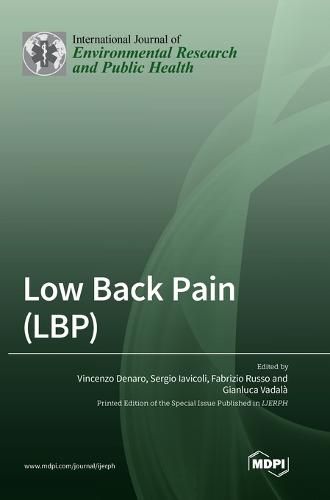Readings Newsletter
Become a Readings Member to make your shopping experience even easier.
Sign in or sign up for free!
You’re not far away from qualifying for FREE standard shipping within Australia
You’ve qualified for FREE standard shipping within Australia
The cart is loading…






This title is printed to order. This book may have been self-published. If so, we cannot guarantee the quality of the content. In the main most books will have gone through the editing process however some may not. We therefore suggest that you be aware of this before ordering this book. If in doubt check either the author or publisher’s details as we are unable to accept any returns unless they are faulty. Please contact us if you have any questions.
Low back pain (LBP) is a major public health problem, being the most commonly reported musculoskeletal disorder (MSD) and the leading cause of compromised quality of life and work absenteeism. Indeed, LBP is the leading worldwide cause of years lost to disability, and its burden is growing alongside the increasing and aging population.
The etiology, pathogenesis, and occupational risk factors of LBP are still not fully understood. It is crucial to give a stronger focus to reducing the consequences of LBP, as well as preventing its onset. Primary prevention at the occupational level remains important for highly exposed groups. Therefore, it is essential to identify which treatment options and workplace-based intervention strategies are effective in increasing participation at work and encouraging early return-to-work to reduce the consequences of LBP.
The present Special Issue offers a unique opportunity to update many of the recent advances and perspectives of this health problem. A number of topics will be covered in order to attract high-quality research papers, including the following major areas: prevalence and epidemiological data, etiology, prevention, assessment and treatment approaches, and health promotion strategies for LBP. We have received a wide range of submissions, including research on the physical, psychosocial, environmental, and occupational perspectives, also focused on workplace interventions.
$9.00 standard shipping within Australia
FREE standard shipping within Australia for orders over $100.00
Express & International shipping calculated at checkout
This title is printed to order. This book may have been self-published. If so, we cannot guarantee the quality of the content. In the main most books will have gone through the editing process however some may not. We therefore suggest that you be aware of this before ordering this book. If in doubt check either the author or publisher’s details as we are unable to accept any returns unless they are faulty. Please contact us if you have any questions.
Low back pain (LBP) is a major public health problem, being the most commonly reported musculoskeletal disorder (MSD) and the leading cause of compromised quality of life and work absenteeism. Indeed, LBP is the leading worldwide cause of years lost to disability, and its burden is growing alongside the increasing and aging population.
The etiology, pathogenesis, and occupational risk factors of LBP are still not fully understood. It is crucial to give a stronger focus to reducing the consequences of LBP, as well as preventing its onset. Primary prevention at the occupational level remains important for highly exposed groups. Therefore, it is essential to identify which treatment options and workplace-based intervention strategies are effective in increasing participation at work and encouraging early return-to-work to reduce the consequences of LBP.
The present Special Issue offers a unique opportunity to update many of the recent advances and perspectives of this health problem. A number of topics will be covered in order to attract high-quality research papers, including the following major areas: prevalence and epidemiological data, etiology, prevention, assessment and treatment approaches, and health promotion strategies for LBP. We have received a wide range of submissions, including research on the physical, psychosocial, environmental, and occupational perspectives, also focused on workplace interventions.